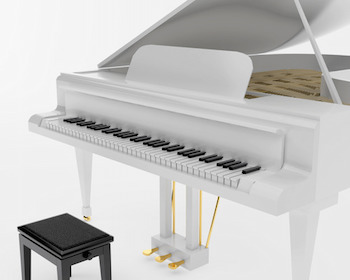Most pianos come with a bench, and if you’ve had your piano for years, chances are you’ve been living with your piano bench for years too.
But does that make it the right accessory for the job?
Benches typically come in two basic types: a fixed height or adjustable. Consumer grade pianos usually come with a fixed height bench that either has a wood top to match the finish of the piano, or with a padded top to compliment the color of the piano. Because most piano benches come with the piano, they are usually small replicas of the piano, with the legs matching the legs of the piano. 
Most piano benches also come with music storage compartments. Simply lift the bench and you’ll find extra storage space to keep everything you need for practicing and playing the piano. All in all, the standard piano bench will service you well throughout the years. But there are many reasons you may consider upgrading to an adjustable piano bench.
Adjustable benches are preferred by children, adults who are shorter or taller than average, and by serious amateurs or professional piano players that spend a lot of time at the piano. The standard height of a piano bench is 19” or 20”, while an adjustable piano bench can be set anywhere from 18” to 21”. By adjusting the height and moving it slightly, anyone can get the proper posture and angle to the keyboard, making playing that much easier.
A high quality adjustable bench will have a heavy steel mechanism to help raise and lower the bench. In a duet size bench, these benches can easily weigh 60 pounds or more. These benches will also come in a variety of styles and finishes, perfect to match any style of piano. Keep in mind that like anything, you can get higher and lower quality adjustable benches. While a high quality bench can last a lifetime, lesser quality benches come with mechanisms that aren’t as hardy, and therefore can break or have problems earlier on.
A new type of adjustable bench contains hydraulic or pneumatic mechanisms for raising and lowering the seat. This makes the bench easily and effortlessly adjusted with a handle on the side of the bench. (Similar to the office chair you may have in your office.)This can offer an advantage to piano players that have wrists that are easily fatigued, or in teaching situations where the bench is raised and lowered multiple times throughout the day.
To see all of your options in piano benches, stop by today.

